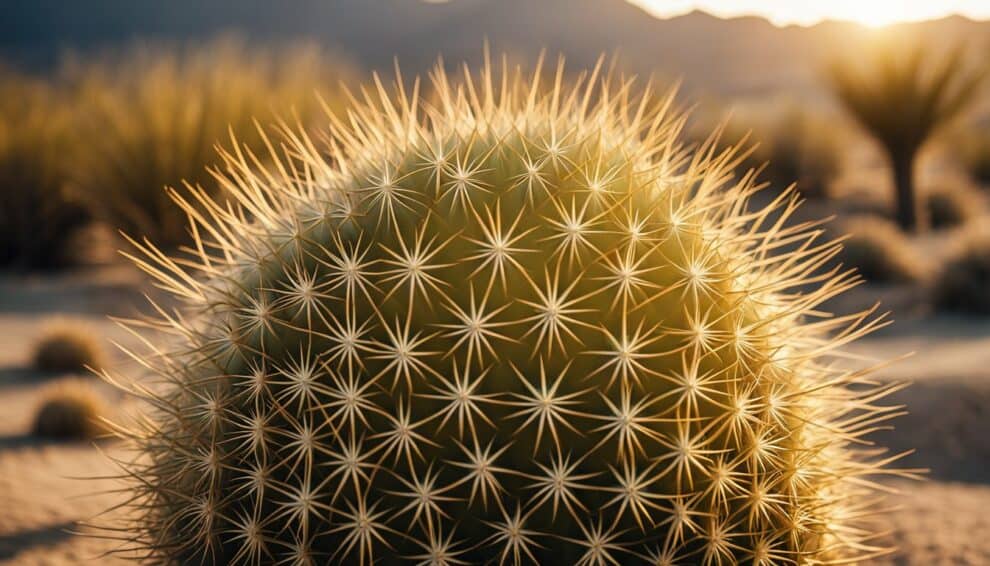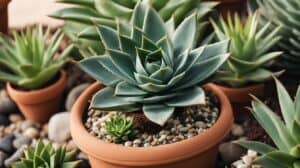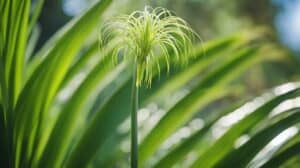The Golden Barrel Cactus (Echinocactus grusonii) is a popular ornamental plant due to its unique appearance and low maintenance requirements. It is native to the deserts of Mexico and is well adapted to arid environments. The cactus has a spherical shape and is covered in golden spines, which give it its name.

Propagation of the Golden Barrel Cactus can be done through various methods such as seed propagation, offsets, and cuttings. Seed propagation is the most common method, but it requires patience as it can take several years for the cactus to reach maturity. Offsets and cuttings, on the other hand, can produce mature plants faster but require careful handling to prevent damage to the cactus.
In this article, we will explore the different methods of propagating the Golden Barrel Cactus in detail. Whether you are a seasoned gardener or a beginner, this guide will provide you with the knowledge needed to successfully propagate and care for this unique cactus.
Understanding the Golden Barrel Cactus
Species Overview
The Golden Barrel Cactus, scientifically known as Echinocactus grusonii, is a slow-growing, globular cactus species that belongs to the family Cactaceae. It is native to central Mexico and is commonly found in the states of Hidalgo, Queretaro, and San Luis Potosi. The cactus is known for its distinctive golden-yellow spines that cover its spherical body, which can reach up to 3 feet in diameter and height.
Habitat and Distribution
The Golden Barrel Cactus is adapted to the harsh desert climate of central Mexico, where it grows in rocky, well-drained soils. It is commonly found in the semi-arid regions of the Chihuahuan and Sonoran deserts, where temperatures can range from freezing to over 100°F. The cactus is also found in the wild in parts of Arizona, California, and Texas in the United States.
The Golden Barrel Cactus is a popular ornamental plant in gardens and landscapes due to its striking appearance and low maintenance requirements. It is also used in traditional medicine to treat various ailments, such as fever, coughs, and skin infections. However, due to habitat destruction and over-collection, the species is considered endangered in the wild and is protected under Mexican law.
Overall, the Golden Barrel Cactus is a fascinating and unique species that is worth learning about and preserving for future generations.
Propagation Methods

There are two main methods for propagating the Golden Barrel Cactus: seed propagation and offset division.
Seed Propagation
Seed propagation is a relatively simple method for propagating Golden Barrel Cactus. To do this, one must collect seeds from a mature cactus plant and sow them in well-draining soil. It is important to keep the soil moist but not too wet, as excessive moisture can lead to rot. The seeds should germinate within a few weeks, and the resulting seedlings can be transplanted once they have developed a few true leaves.
Offset Division
Offset division is another method for propagating Golden Barrel Cactus. This method involves separating offsets from the parent plant and transplanting them into their own pots. To do this, one must carefully remove an offset from the parent plant using a sharp, sterile knife. The offset should be allowed to callus over for a few days before being planted in well-draining soil. It is important to keep the newly transplanted offset out of direct sunlight until it has had time to establish roots.
Both of these propagation methods are relatively simple and can be done by even novice gardeners. With a little care and attention, one can easily propagate Golden Barrel Cactus and enjoy the beauty of this unique plant in their own home or garden.
Caring for Young Cacti

Soil and Potting
When it comes to soil, young golden barrel cacti prefer well-draining soil with a pH between 6.0 and 7.5. A good potting mix should consist of a combination of sand, perlite, and peat moss. It’s important to use a pot with drainage holes to prevent waterlogging, which can cause root rot.
When repotting, it’s recommended to wait until the cactus outgrows its current pot. This is usually every two to three years. When repotting, gently remove the cactus from its current pot and remove any old soil. Place the cactus in the new pot and fill with fresh potting mix, making sure to leave enough space at the top for watering.
Watering and Feeding
Young cacti require more frequent watering than mature cacti. Water the cactus when the top inch of soil is dry, usually every seven to ten days. It’s important to avoid overwatering, as this can lead to root rot. During the winter months, when the cactus is dormant, reduce watering to once a month.
Fertilizing young golden barrel cacti is not necessary, but it can promote growth. Use a balanced, water-soluble fertilizer once a month during the growing season (spring and summer). Be sure to dilute the fertilizer to half strength to prevent burning the cactus.
Sunlight and Temperature
Golden barrel cacti require full sun to thrive. Young cacti should be placed in a location that receives at least six hours of direct sunlight per day. It’s important to acclimate the cactus to full sun gradually, as too much sun can cause sunburn.
In terms of temperature, golden barrel cacti can tolerate a wide range of temperatures. During the growing season, temperatures between 70°F and 90°F are ideal. During the winter months, temperatures between 50°F and 60°F are ideal. It’s important to protect the cactus from frost, as prolonged exposure to freezing temperatures can cause damage or death.
Overall, with proper care and attention, young golden barrel cacti can grow into beautiful, healthy plants.
Frequently Asked Questions

What are the optimal conditions for germinating golden barrel cactus seeds?
Golden barrel cactus seeds require warm temperatures and well-draining soil to germinate successfully. The ideal temperature range for germination is between 70-85°F (21-29°C). It is recommended to use a well-draining soil mix that is slightly moist but not too wet. The seeds should be planted at a depth of 1/4 inch (6 mm) and kept in a warm, bright location.
Can you propagate a golden barrel cactus from cuttings, and if so, how?
Yes, golden barrel cacti can be propagated from cuttings. To do so, cut a healthy stem from the parent plant and allow the cut end to dry for a few days. Once the cut end has calloused over, plant the cutting in a well-draining soil mix and water sparingly until new growth appears.
What is the best time of year to propagate a golden barrel cactus?
The best time to propagate a golden barrel cactus is during the plant’s active growing season, which is typically in the spring and summer months. This is when the plant is most likely to produce new growth and root successfully.
How long does it take for a golden barrel cactus seedling to mature?
Golden barrel cacti are slow-growing plants and can take several years to reach maturity. Seedlings typically take 5-7 years to mature and start producing their characteristic golden spines.
Do golden barrel cacti produce offshoots, and how can they be separated for propagation?
Yes, golden barrel cacti can produce offshoots called “pups” that can be separated for propagation. To do so, carefully remove the pup from the parent plant using a sharp, sterile knife. Allow the cut end to dry for a few days before planting in a well-draining soil mix.
What care should be taken after propagating a golden barrel cactus to ensure successful growth?
After propagating a golden barrel cactus, it is important to provide it with the right growing conditions to ensure successful growth. This includes placing the plant in a warm, bright location with well-draining soil and watering sparingly until new growth appears. Once the plant is established, it can be watered more frequently but should still be allowed to dry out between waterings. Regular fertilization during the growing season can also help promote healthy growth.













